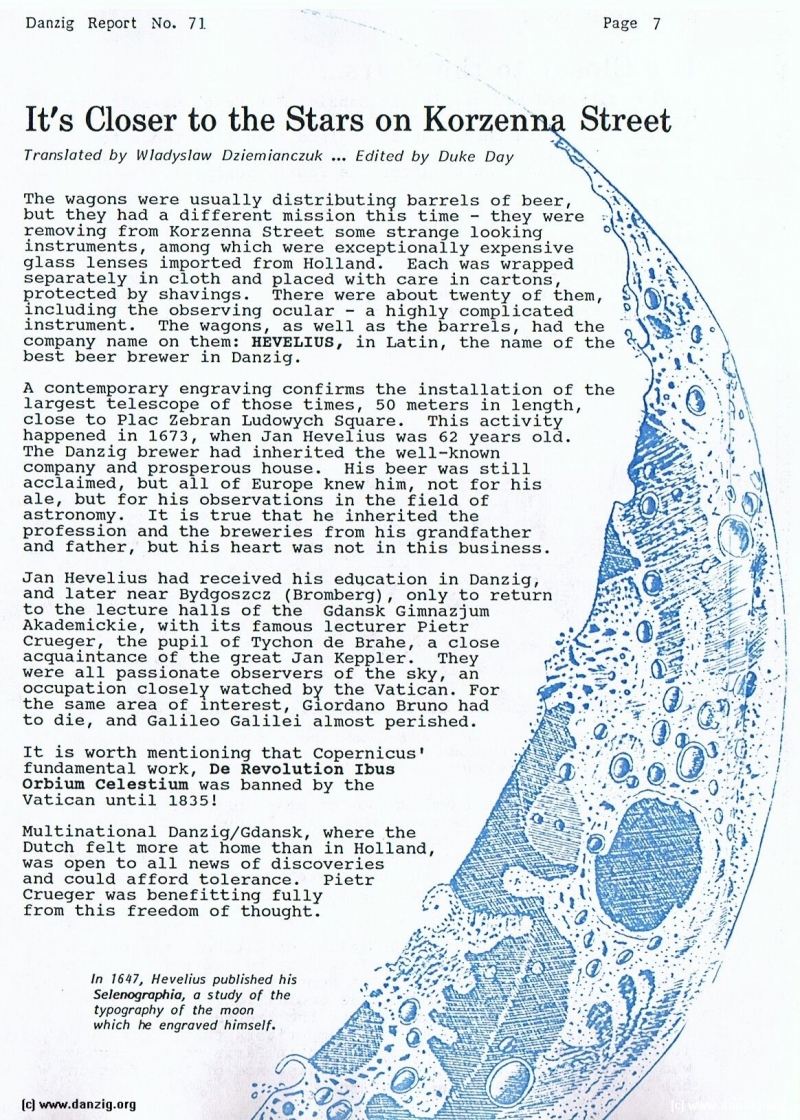
It’s Closer to the Stars on Korzenn Street
Translated by Wiadyslaw Dziemianczuk ... Edited by Duke Day
The wagons were usually distributing barrels of beer, but they had a different mission this time - they were removing from Korzenna Street some strange looking instruments, among which were exceptionally expensive glass lenses imported from Holland. Each was wrapped separately in cloth and placed with care in cartons, protected by shavings. There were about twenty of them, including the observing ocular - a highly complicated instrument. The wagons, as well as the barrels, had the company name on them: HEVELIUS, in Latin, the name of the best beer brewer in Danzig.
A contemporary engraving confirms the installation of the largest telescope of those times, 50 meters in length, close to Plac Zebran Ludowych Square. This activity happened in 1673, when Jan Hevelius was 62 years old. The Danzig brewer had inherited the well-known company and prosperous house. His beer was still acclaimed, but all of Europe knew him, not for his ale, but for his observations in the field of astronomy. It is true that he inherited the profession and the breweries from his grandfather and father, but his heart was not in this business.
Jan Hevelius had received his education in Danzig, and later near Bydgoszcz (Bromberg), only to return to the lecture halls of the Gdansk Gimnazjum Akademickie, with its famous lecturer Pietr Crueger, the pupil of Tychon de Brahe, a close acquaintance of the great Jan Keppler. They were all passionate observers of the sky, an occupation closely watched by the Vatican. For the same area of interest, Giordano Bruno had to die, and Galileo Galilei almost perished.
It is worth mentioning that Copernicus’ fundamental work, De Revolution Ibus Orbium Celestium was banned by the Vatican until 1835!
Multinational Danzig/Gdansk, where the Dutch felt more at home than in Holland, was open to all news of discoveries and could afford tolerance. Pietr Crueger was benefitting fully from this freedom of thought.
In 1647, Hevelius published his Selenographia, a study of the typography of the moon which he engraved himself.
Danzig Report Vol. 1 - Nr. 71 - April - May - June - 1991, Page 7.
Hits: 4390
Added: 30/06/2015
Copyright: 2026 Danzig.org

